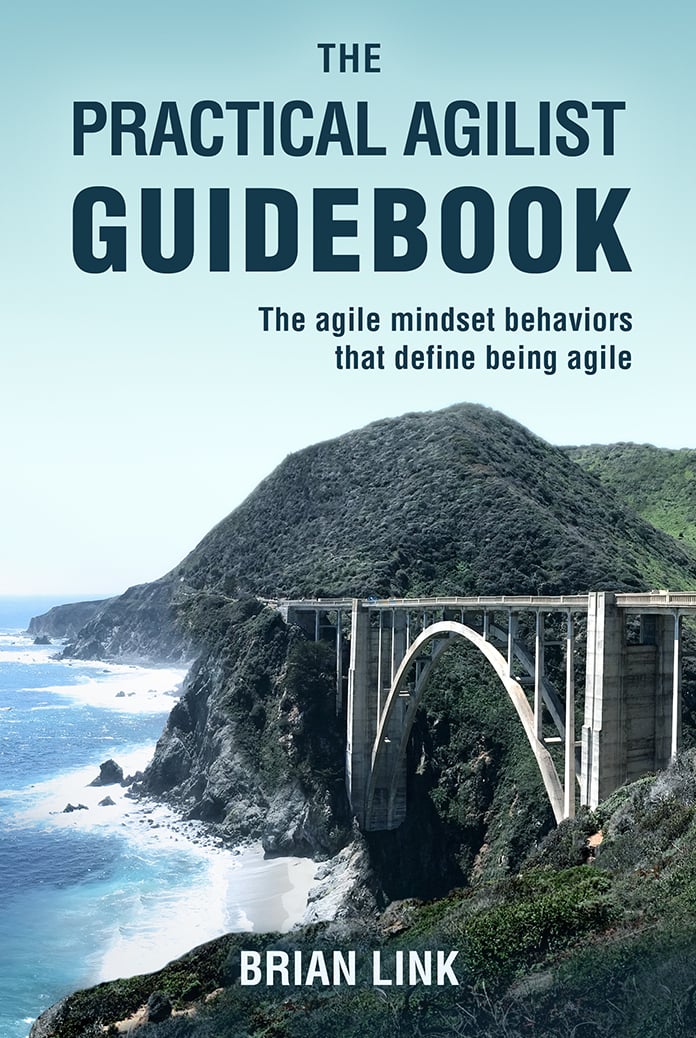
The Practical Agilist Guidebook: The Agile Mindset Behaviors that Define Being Agile (print/digital edition)
(This edition mirrors the paperback. No links. Same format as print edition)
High performing teams that embrace the modern ways of working innately understand what it means to embrace the Agile Mindset. The agile ways of working are frequently misunderstood, often thought of as a new set of rules to follow through guidelines set by a framework or methodology. And yet, when done well, being agile is more akin to a new way of thinking.
Those that adhere strictly to a framework like Scrum, Kanban, LeSS, or SAFe without understanding the underlying mindset may find themselves implementing a mechanical form of agile, only going through the motions, still grounded in the old ways of working.
Agile Coaches often describe the benefits of being agile vs. doing agile. If you are just doing agile, you "don't get it" yet. But when it clicks and a team understands why they are working differently, this is the moment the team has started being agile.
Being agile is about the behaviors behind the Agile Mindset.
The Agile Mindset is something that takes time to fully understand. In this book, the author and Agile Coach, Brian Link, explains a multi-faceted definition of the Agile Mindset that meticulously explains the subtle but necessary changes one must make to the way they think about work.
The Agile Mindset, he states, is a combination of seven different cultures and mindsets. This is the list a team should understand and embody to truly be agile:
- An Iterative Mindset
- A Product Culture
- A Customer-Centric Mindset
- A Culture of Learning
- A Culture of Experimentation
- A Culture of Continuous Improvement
- A Culture of Psychological Safety
A Guidebook for Continuous Improvement
This book is meant to be read in whatever order is helpful; a guidebook to discover more information about the topics a team needs to improve. It's presented as 24 topics in four sections: Team Culture, Agile Process Basics, Product Management, and Value Delivery.
Brian explains why each Topic is important just as an Agile Coach would explain it to a team. His explanations are clear and easy to follow covering the principles, values, and beliefs of a wide variety of familiar concepts: the Agile Manifesto, Lean, XP, Design Thinking, DevOps, and Systems Thinking.
Each Topic includes the following subsections:
- The Topic. All 24 topics are framed as a question. Each Topic body explains the ideas and lessons as an agile coach would share with a team.
- Tips for Leadership. For leaders or managers of teams, this section includes advice and context about how leaders can help the team as well as better create the environment for their success.
- Tips for Scrum Masters. The subtleties and techniques a Scrum Master might use to help the team understand the topic. There are recommended activities and ideas to help the Scrum Master do their job.
- Table of Behaviors. For each topic, there are three or four representative behaviors that are evident in teams. These are described in low, medium, and high levels of maturity. Each behavior is described with examples of the three levels of maturity so the reader will recognize where their team stands and what they have yet to learn in the Topic.
- AI Prompts. One way the reader might want to dig deeper is to ask a service like ChatGPT for additional content and ideas around the Topic. By using these suggested prompts, the reader will uncover additional ideas to inspire them to learn and explore.
- Where To Learn More. Throughout each Topic there are references to books, videos, and other forms of online content. There are additional references not mentioned in the text that are also useful, so this subsection at the end of every Topic highlights and summarizes recommended content for further reading as an Interactive Bibliography.


